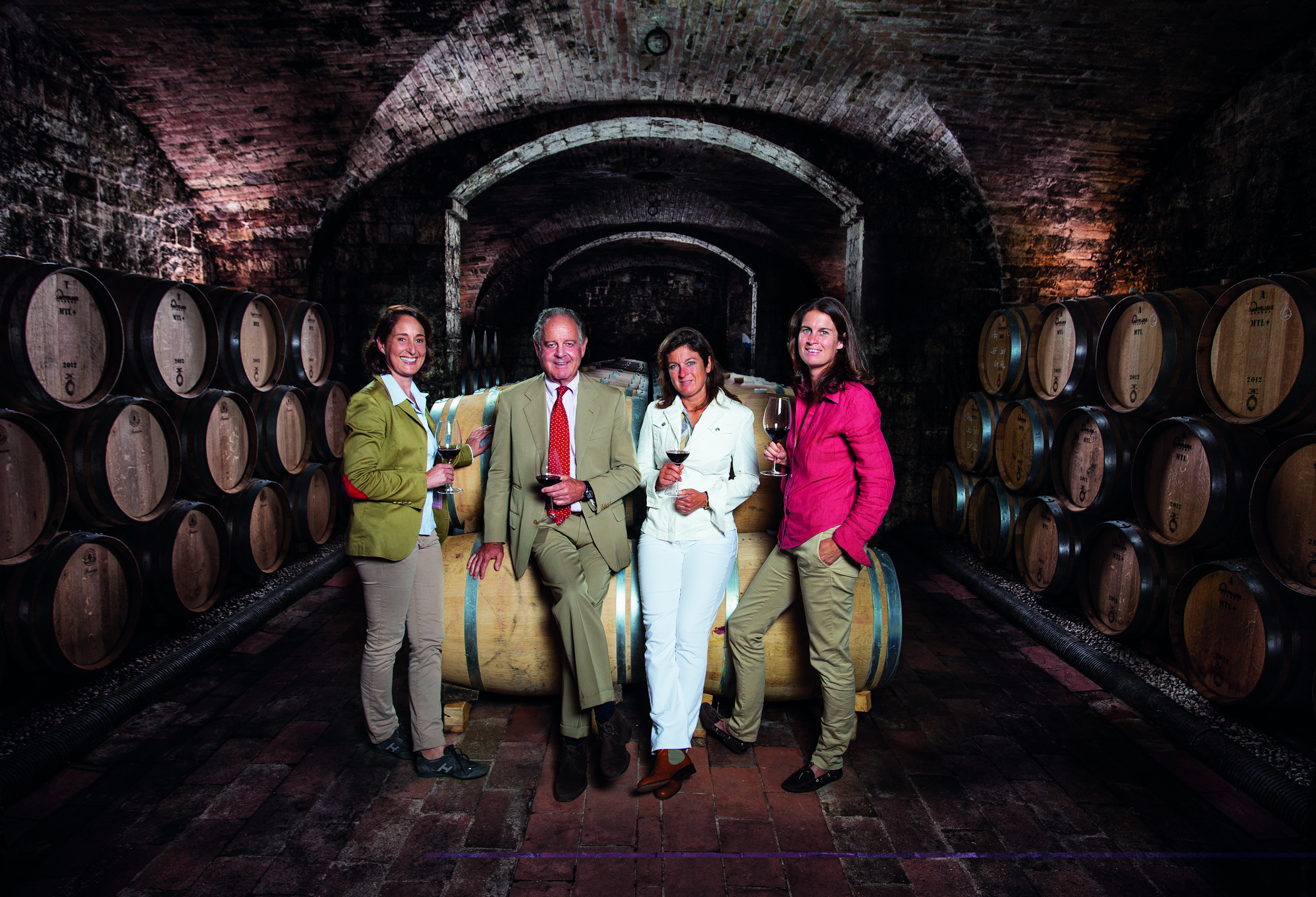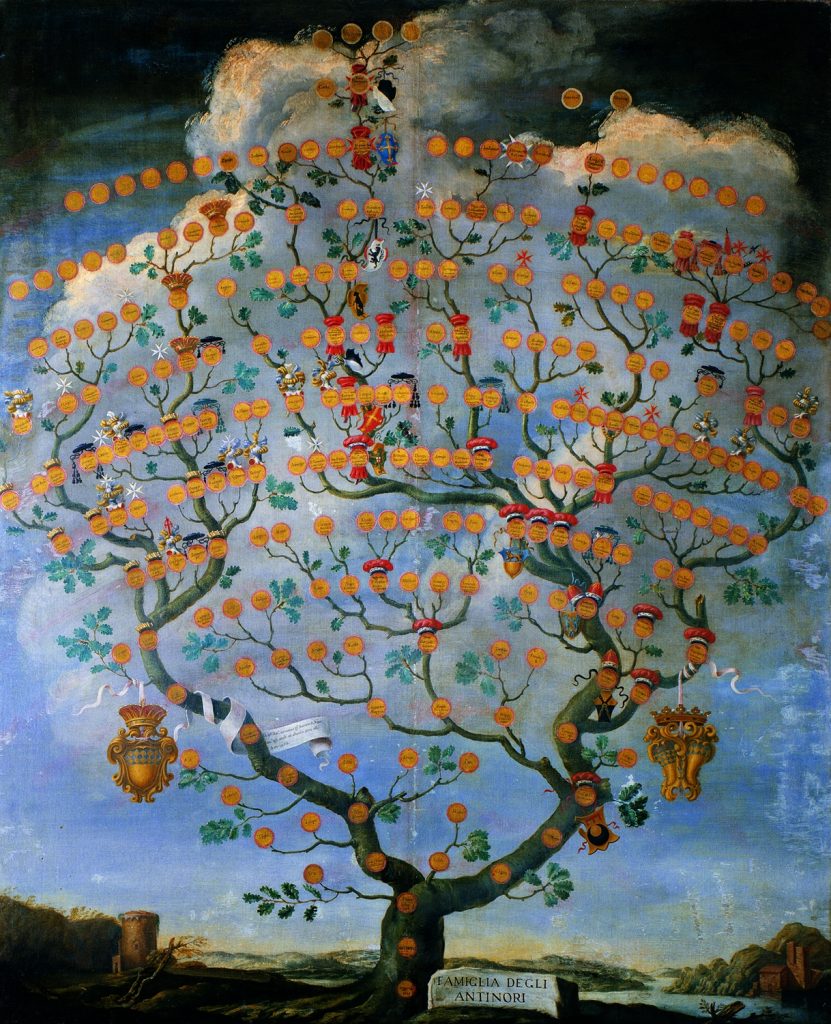Amanda Barnes sits down to taste a vertical of Solaia as the Antinori family launches its latest restaurant in the heart of London.
“Having 630 years of history helps us to be patient,” says Allegra Antinori, 26th generation of the Antinori wine dynasty and the middle of the three sisters gradually taking over from their father, Marchese Piero Antinori.
“This is not a soft launch, but a long launch!” she joked about the family’s newest restaurant in upmarket Knightsbridge, which has been gradually opening since April during an extended soft launch period. The tradition of the family’s Cantinetta Antinori restaurants started in 1957 in Florence. On the ground floor of the 1400s-constructed Palazzo Antinori, it is still their flagship restaurant but it is also joined by newer cantinas in Zurich, Monte Carlo, Moscow, Vienna and, most recently, London.
“The Caninetta is a place where people can come into our house, into our home,” Allegra explained. “We want people to come here to get to know more about Antinori.” A restaurant and wine bar, the devil is in the detail with their Cantinetta. Each detail reflects the family’s heritage and taste: from the Tuscan cuisine, including family favourites like pasta amatriciana di manzo and lamb with borlotti beans, to the tasteful choices of the decor with many pieces and artefacts from their own private collection. Allegra has overseen all the details in the opening, which is why the doors will only open for full time service when everything and everyone is ready.
That steadfast patience and unwavering courage not to rush is clearly part of the family philosophy, and it is largely how they have built their reputation as one of the world’s greatest wine families.

At the press launch of Cantinetta Antinori we had the chance to sit down to a vertical of Solaia — their iconic ‘Super Tuscan’ that was first produced in 1978 and, in export manager Francesco Visani’s words, has become the “most representative wine of Antinori”. Each year (with the exception of 1980, 1981, 1983, 1984 and 1992, which weren’t up to standard), Solaia is released after almost two years in barrel and a further two in bottle.
On tasting the 2006, 2010, 2016 and 2019, gradual changes in the approach to winemaking and final composition of the blend (approximately 75% Cabernet Sauvignon, 5% Cabernet Franc and 20% Sangiovese) are evident. The difference between the riper, denser 2006 over the clarity, purity and greater precision evident in 2010 and onwards was, at least for me, the most notable. “We stopped doing malolactic fermentation in new oak barrels,” is where Francesco attributed the difference. “The wines are cleaner than before, and the tannins are more approachable.”
Another detail that has changed significantly in their winemaking is the ordering of the barrels post-harvest… “we order about 70% of our barrels once we have already harvested, so we can now customise the new oak dependant on the qualities of the harvest,” explained Francesco. It was no mean feat to get the cooperages in France to agree to turn around such a significant quantity of new barrels in that time, but these are the details that the Antinori’s assert make all the difference. The spice and balance of the oak in 2019 certainly showed great sensitivity, in spite of its relative youth — still compact in nature but with no element overpowered, already showing a restrained elegance.
The blend too has gradually evolved and, as Francesco explained, likely will continue to evolve in response to climate change: “With the effects of climate change, we are seeing that Cabernet Franc is adapting increasingly well”. In the new, and yet unreleased, vintages you can expect 10% of Cabernet Franc to make the final cut. The 2016 — with 72% Cabernet Sauvignon, 8% Cabernet Franc and 20% Sangiovese — already sings with lifted red fruit and a heightened leafiness from more Cabernet Franc, over the more black-fruited expressions of 2006 and 2010.
Despite these subtle changes, the tasting of Solaia showed the consistency and authenticity of the Antinori approach and, ultimately, the importance of terroir. Coming from the same 20-hectare vineyard on their Chianti estate since that first vintage some 45 years ago, it is the place that Allegra believes will bring consistency even in the face of climate change:
“The only way to give the same consistent personality in wines is having them come from the same vineyard, they are a ‘cru’,” she explained. “That identity is undeniably from the place — even the Cabernet here comes with a Tuscan personality!”
Place trumps variety in Francesco’s opinion too, as he highlighted commenting on the anomaly vintages of 1978, 1979 and 2002 when Sangiovese didn’t make it to the Solaia blend: “Even when we don’t have Sangiovese in Solaia, we get the acidity and minerality of Tuscany… that character of Chianti Classico comes through. It’s a very peculiar Cabernet [Sauvignon and Franc] that we have.”
More than just a Tuscan personality, I would argue there’s a very evident Antinori personality or peculiarity, which is driving the ever-greater demand for these wines internationally. It is actually the approachability of Solaia, and its tasteful restraint, which makes it so good.
“We are trying to make wines that have personality, drinkability and authenticity,” summarised Allegra. “The best vintage is always the last one, because each vintage gives you experience.”
Cantinetta Antinori, where Solaia and a large selection of Antinori’s wines are available, reflects that experience. The launch might have been long, but as Solaia and many of the family’s achievements over the centuries go to prove, good things come to those who wait.
Cantinetta Antinori is currently open Friday and Saturdays for lunch, and Tuesday through Saturday for dinner.

